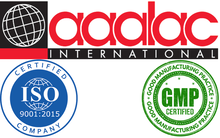Which tag to choose for my protein expression project?
Mentioned in the other article, protein tag is one of the factor that has to be considered before set up you project. It is never to much to take different tags into consideration, as we will show in this article, there are many tags we are now using and each of them exhibit a certain property. These tags can be broadly classified into two categories: affinity tags that aid in purification but do not enhance the solubility of the proteins substantially, and solubility-enhancing tags that specifically enhance the solubility and recovery of functional proteins.
To acquire a “good” protein is the target of a protein project. Proper design and sensible use of the right fusion tag can improve the solubility and promote proper folding of the expressed protein, which increase the possibility of harvest functional protein. On the other hand, introduce a tag into the recombinant protein may lead to the opposite situation like poor yield, change of conformation, introduce in unexpected biological activity, etc. Even we have plenty of tools to predict the consequence of protein expression but we are still lacking knowledge to realize precision prediction. Therefore downstream tests are essential for establish a perfect cell line. Only after expression optimization, purification test and optimization and/or multiple strain/cell line we can determine the real performance of the tag in the fusion protein.
Affinity Tags
Affinity tags are a fragment of amino acid (aa) sequence that able to bind to a ligand with high affinity. Mostly, the affinity tags either bind to a ligand linked to a solid support (like the His tag) or contain an epitope recognized by immobilized antibodies (like the FLAG or c-Myc tags). The high affinity of these tags for their ligands and the availability of well developed immobilized supports for capturing the fusion proteins allow the protein of interest to be purified to a very high degree. Because of their small size, these affinity tags can be added at either terminal of the protein or in a region that is exposed to the surface. However, these tags generally do not increase the expression of the fusion proteins or enhance their solubility, and therefore are of little use in purifying hard-to-express proteins.
Solubility-enhancing tags
Solubility-enhancing tags are generally protein fragment or peptides that increase the expression and solubility of reconstructed proteins. Among these tags, GST and MBP also perform affinity tags function, consequently they are often used for protein purification. Other fusion tags like NusA, thioredoxin (TRX), small ubiquitin-like modifier (SUMO), and ubiquitin (Ub), will require additional affinity tags for use in affinity purification.
|
Tag |
Size |
Tag placement |
Uses |
Typical
sequence |
|
Affinity tags |
||||
|
His tag |
6 or 8 aa |
N-, C-, internal |
Purification |
HHHHHH |
|
Strep II tag |
8 aa |
Purification |
WSHPQFEK |
|
|
Avi tag |
15 aa |
N-, C- |
Purification |
GLNDIFEAQKIEWHE |
|
T7 tag |
11 or 16 aa |
N-, internal |
Purification |
MASMTGGQQMG |
|
FLAG tag |
8 aa |
N-, C- |
Purification |
DYKDDDDK |
|
S tag |
15 aa |
N-, C- |
Purification |
KETAAAKFERQHMDS |
|
HA tag |
9 aa |
N-, C- |
Purification |
YPYDVPDYA |
|
C-Myc tag |
11 aa |
N-, C- |
Purification |
EQKLISEEDL |
|
Chitin binding domain |
51 aa |
N-, C- |
Purification |
|
|
Calmodulin binding domain |
26 aa |
N-, C- |
Purification |
KRRWKKNFIAVSAANRFKKISSSGAL |
|
Cellulose binding domain |
27 – 129 aa |
N-, C- |
Purification |
TQSHYGQCGGIGYSGPTVCASGTTCQVLNPYYSQCL[1] |
|
Solubility-enhancing
tag |
||||
|
GST |
211 aa (26 kDa) |
N- |
Enhancing solubility & purification |
|
|
MBP |
396 aa (40 kDa) |
N-, C- |
Enhancing solubility & purification |
|
|
T7 gene 10 |
260 aa |
N- |
Enhancing solubility & purification |
|
|
NusA |
495 aa (54.8 kDa) |
N- |
Enhancing solubility |
|
|
Thioredoxin (Trx tag) |
109 aa |
N-, C- |
Enhancing solubility |
|
|
SUMO |
100 aa |
N- |
Enhancing solubility |
|
|
Ubiquitin |
76 aa |
N- |
Enhancing solubility |
|
In a nutshell, to find the best tags for fusion protein need experience as well as a mature research line. Bio Bench is always trying to seek the most simple solution to have the best result.
[1]Sugimoto, N., Igarashi, K., & Samejima, M. Cellulose affinity purification of fusion proteins tagged with fungal family 1 cellulose-binding domain. Protein Expression and Purification (2012). 82(2), 290–296. source


